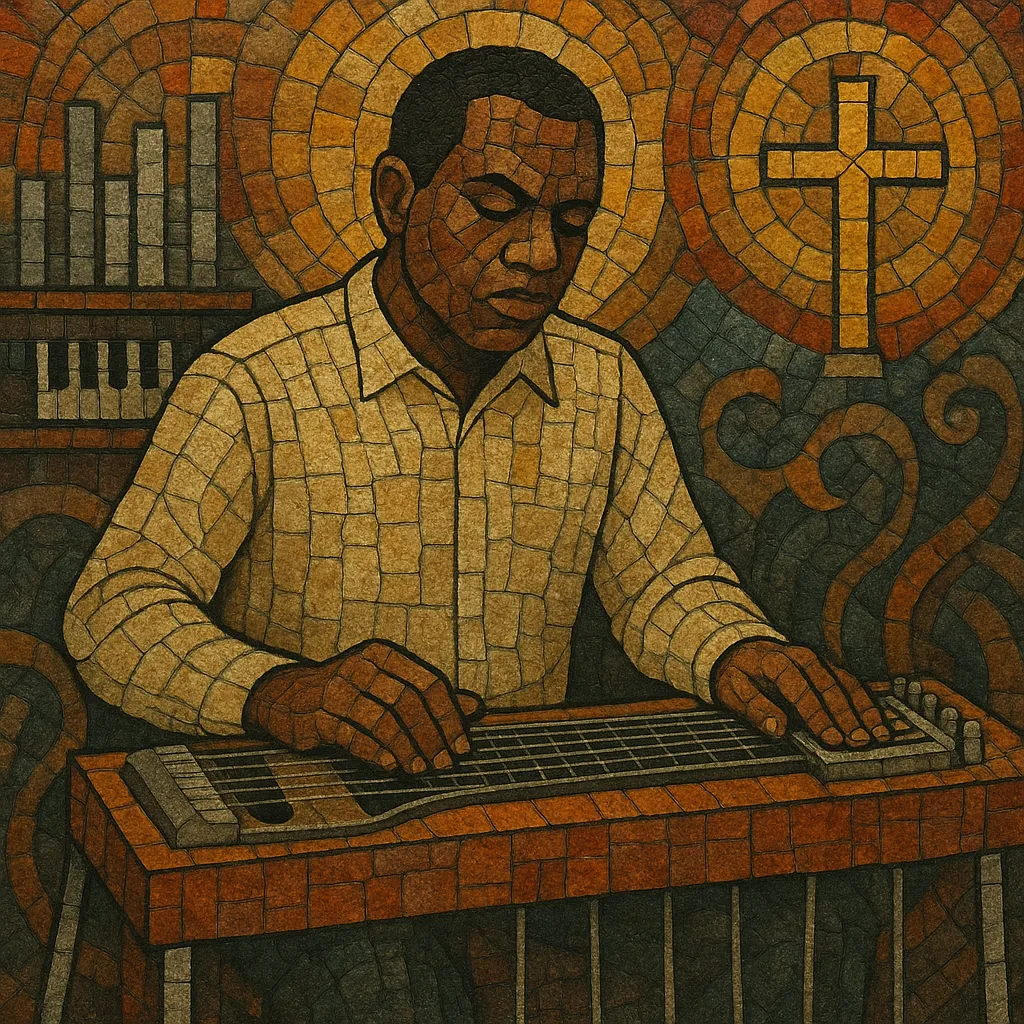
Sacred steel is an African-American gospel tradition in which the lap steel or pedal steel guitar becomes the lead "voice" of the church band. It emerged within the House of God (Keith and Jewell Dominions) and related Pentecostal congregations, where the instrument accompanies sermons, prayers, and ecstatic worship.
The style is defined by vocal-like slides, wide vibrato, call-and-response with the congregation, and high-energy "shout" sections driven by a tight rhythm section and Hammond organ. Harmonies draw on gospel, blues, and rhythm & blues, while the steel guitar articulates melodies as if singing, often quoting hymns and spirituals. Since the late 1990s it has also crossed into secular stages, influencing roots-oriented rock and jam scenes while remaining a living church tradition.
Sacred steel took shape in the 1930s in the United States within Pentecostal congregations of the House of God (Keith Dominion and Jewell Dominion). Inspired by gospel singing and spirituals, early innovators—most notably Willie Eason—adapted Hawaiian- and country-informed steel guitar techniques to the Black church context. The instrument’s vocal-like portamento and sustaining tone proved ideal for testifying, responding to the preacher, and leading congregational song.
Across the mid-20th century, the tradition spread among church districts. Players moved from lap steel to pedal steel, adding chordal possibilities and expressive bends. Core elements coalesced: call-and-response with choirs, 12/8 gospel shuffles and 4/4 "shout" feels, blues-inflected harmony, and dynamic swells via a volume pedal. Key figures included Calvin Cooke (often called the "B.B. King of the steel guitar"), Aubrey Ghent, and the Campbell family (e.g., Chuck and Darick Campbell), who helped codify the sound and repertoire.
The tradition remained largely intra-church until folklorist Robert L. Stone documented it extensively, leading to Arhoolie Records’ "Sacred Steel" compilations in the late 1990s. These releases brought national attention to a previously insular practice and set the stage for concert and festival appearances by church-based ensembles.
Robert Randolph & the Family Band catalyzed a crossover into jam and roots-rock circuits in the early 2000s, collaborating with secular artists and appearing at major festivals. Meanwhile, church-based groups like The Campbell Brothers and The Lee Boys continued to perform both in worship and on public stages. Today, sacred steel remains an active Pentecostal worship practice while also informing contemporary gospel, praise & worship instrumentation, and roots/rock guitar approaches.

